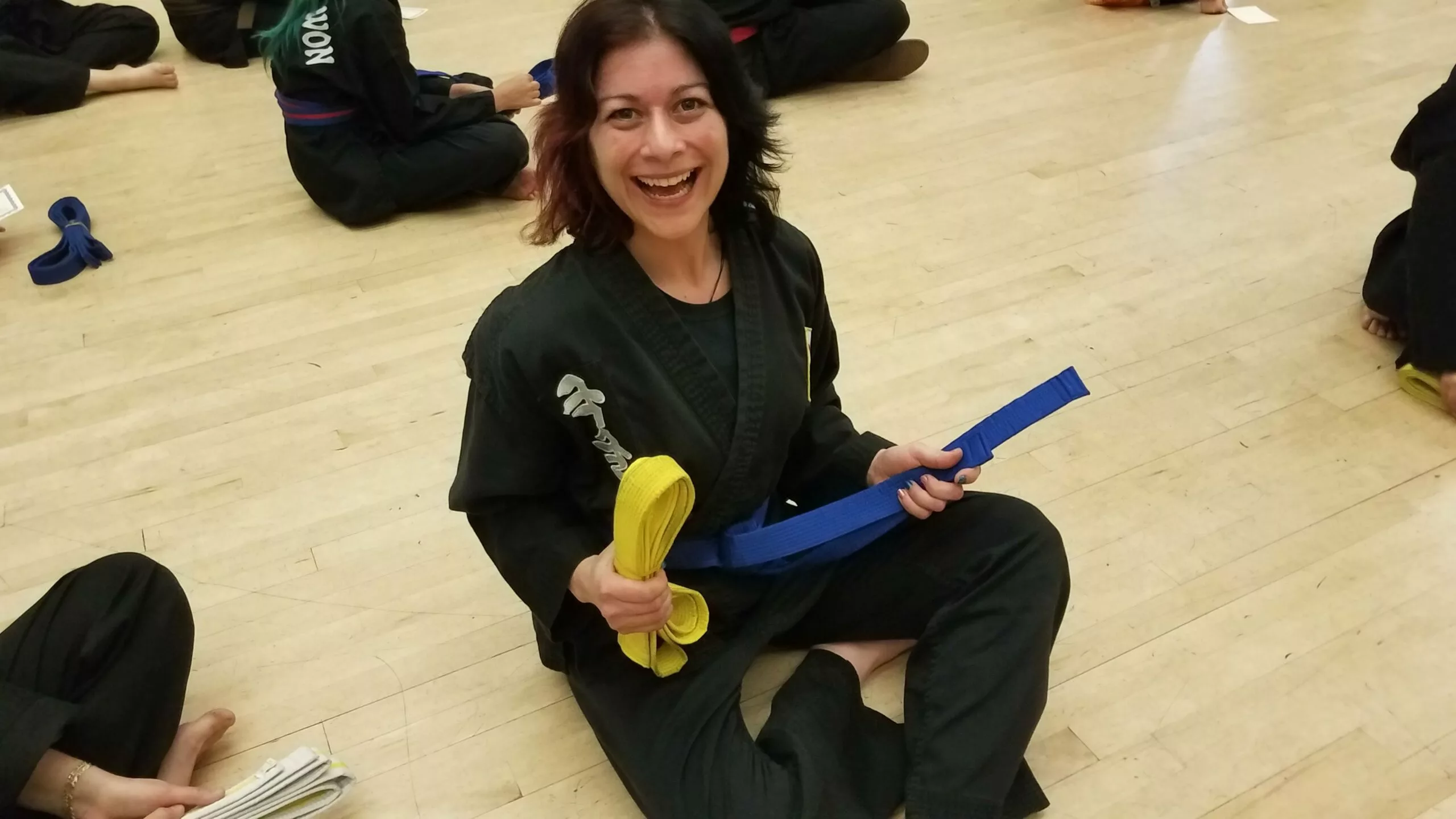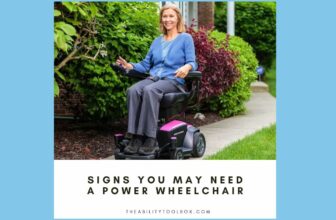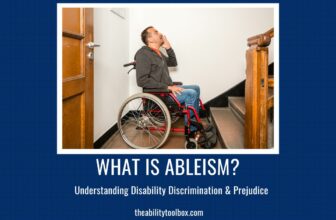Life with fibromyalgia can be an incredibly challenging, isolating, and disenfranchising experience. This is partly because the nature of the disease and how to properly manage it are still poorly understood. Most traditional medical interventions prove fruitless, leaving both patients and doctors frustrated. In an effort to empower the patient, they are often advised to focus on things they do have control over, like diet and exercise.
However, doctors often fail to advise patients on how to create a fitness routine around the challenges presented by this disabling disease. Fibromyalgia patients experience several types of pain affecting the entire body, including the joints, nervous system, and muscles. This is compounded by a heightened response to pain, stress, and other sensory inputs, along with chronic fatigue, brain fog, and a myriad of other symptoms. All of these hurdles combined can make it incredibly challenging for those living with this syndrome to initiate and maintain a regular fitness routine. However, growing evidence is showing that the right types of exercise performed under the right conditions can be very beneficial for people with fibromyalgia, and that being sedentary makes everything about the disease worse. But even knowing that, it can be difficult to get the ball rolling on a regular exercise routine when you feel like you’re drowning in pain and fatigue.
Thankfully, you can break the downward spiral and start moving again, no matter what your current fitness levels are. By starting slowly, practicing the right exercises, and being vigilant in your recovery, self-care, mindset, and accountability, you (Yes, you!) are capable of achieving your goals. Here’s how to exercise safely with fibromyalgia while remaining consistent, despite living with the inconsistency that is this chronic illness.
Please note: I’m not affiliated with any of the recommended companies, persons, or programs in this article. I’m simply recommending routines I’ve personally tried and found to be beneficial on my own wellness journey. Please consult with your doctor before starting any new exercise schedule.
How Muscle Pain from Exercise Affects People with Fibromyalgia
Being sore is a normal part of working out. It means we’re pushing our muscles so that they’re growing in a healthy way. For those with Fibromyalgia, however, being sore can turn into a full-blown flare and derail our fitness routine. By understanding how muscle pain works, we can better prepare for and minimize it. There are two general types of muscle pain one experiences due to exercise – acute muscle soreness, and delayed onset muscle soreness (DOMS).
Acute muscle soreness is caused by lactic acid buildup and occurs during or immediately after exercise. DOMS, on the other hand, is triggered by an inflammatory response to microtears muscles undergo as a result of physical exertion, and can occur up to 72 hours post-activity. This is the same process that makes our muscles stronger, and is also known as “muscle fever” – an appropriate moniker, considering it feels like your muscles are simultaneously strained, aching, and on fire.
Generally, able-bodied people only experience body-wide DOMS briefly after intense exercise, or in a localized area after performing a movement incorrectly. Unfortunately, those with fibromyalgia often struggle with body-wide DOMS on a daily basis from innocuous activities, like simply doing chores or walking the dog. And if we do something more intense, like traveling or attending a concert, we could be laid out for days afterward. It’s like our bodies interpret normal physical activity as extremely high-intense exercise, all the time.
This feedback loop can easily derail a regular fitness routine, because you’re constantly in pain from prior activity. And, unfortunately, the more sedentary you are, the worse DOMS will be post-activity, because inactive muscles experience more microtears than active ones. This may seem like a daunting hurdle, but the good news is that the more active you are, the less you will experience post-activity pain and fatigue. This is not to imply that exercise will cure fibromyalgia, but it does give you some sense of control over your symptoms, and any bit of that is incredibly liberating and worth the effort.
Focus on Low-Impact Exercise with Fibromyalgia
Although muscle soreness can be triggered by any high-intensity routine, it is most often caused by resistance routines involving “eccentric” movements. These types of exercises tense the muscle while simultaneously lengthening it; like when the elbow is extended on the downward part of a bicep curl, or during the downward motion of a pushup. So it’s best for those with fibromyalgia to minimize such exercises, and when performing them to do so as safely and conscientiously as possible. Remember, it’s important to focus on consistency over intensity, especially when it comes to strength training. It’s better to stick with shorter, less-intense routines you can practice every day, rather than longer, more intense programs that push you beyond your limit. This will help minimize post-workout flares, and maximize your ability to stay consistent through the ups and downs.
Some of the best types of exercise for fibromyalgia are low-impact movements combined with gentle cardio, mobility, and resistance training. Low-impact exercises leave at least one foot on the ground at a time, like walking, dancing, Pilates, Tai Chi, swimming, aerial, and yoga. Yes, I know your know-it-all Aunt suggested yoga, but it really can be quite helpful! Plus, most of these exercises can be started at home for free or at a very low cost. Low-impact systems designed for sedentary or senior audiences are perfect for those with Fibromyalgia, especially while in a flare or coming out of one – such as the bed, chair, cardio, and strength routines by Fitness with Cindy, or the DDP Yoga Rebuild and Combo Pack programs. High-impact movements, on the other hand, should be avoided by those with fibromyalgia, or modified so there is less strain on the body. These types of routines bring both feet off the ground simultaneously, such as running, jumping rope, and burpees. Although they’re great for increasing bone density and quickly achieving results, high-impact exercises are much harder on the joints, and also pose a higher risk for injury and post-workout flare-ups. Those with fibromyalgia should also steer clear of high-intensity, power-based workouts, like Plyometrics, Cross-Fit, and bootcamps.
Resistance Training to Build Strength with Fibromyalgia
When not in a flare, the addition of resistance training can also be beneficial for fibromyalgia. Resistance training is best summated by Arthritis Research and Therapy as “a type of exercise in which progressive resistance is used to improve muscle strength, endurance, power, or a combination. Resistance can be manipulated with free or machine weights, bands, or elastic tubing, or even with one’s own body weight. Resistance training not only builds muscle strength and mass, it also produces improvements in balance, coordination, and agility.”
Bodyweight exercises two to three days per week are an excellent way for those with chronic illness to begin resistance training while minimizing the risk of injury, a post-workout flare, or DOMS. For those who have been sedentary, I would again emphasize starting with gentle programs designed for seniors and/or those who have also been inactive. If you’re ready for a step up from that, yoga and/or Pilates can be incredibly effective yet gentle forms of bodyweight resistance training.
As you continue to get stronger, you can increase resistance through the use of equipment, like free weights and bands. But always remember – easy does it! When manipulating higher weight, perform a low number of reps slowly and with control, and always follow general strength training safety guidelines. These include warming up properly, maintaining correct form and mindful breathing, and giving your muscles time off to heal between sessions.
Manage Your Fitness Mindset
When establishing an exercise routine with fibromyalgia, it’s pertinent not to judge yourself or set unrealistic goals with unattainable end dates. If you’ve been bedridden or mostly sedentary, do not expect to do a pull-up in the first week, and don’t berate yourself over it. This will only derail your focus, and potentially lead to burnout, injury, and/or lack of motivation. Instead, start where you are right now, establish a foundation, and work your way incrementally up from there. Focus on what you can do, when you can do it, rather than what you can’t. This is applicable to any person’s fitness development, but particularly so for those living with chronic illness and pain.
The beginning of any novel regimen may be grueling while your body adjusts to the new movements. It will be hard work, and you'll have to push through discomfort while learning your limits and knowing when to modify movements or stop them altogether. But, it’s so worth pushing through to the other side, where your muscles have built up enough foundational strength so that post-activity inflammation isn’t as severe. This will take time, patience, and a willingness to experiment.
Find things that inspire you to help get you through the tough spots, and set yourself up for success by choosing exercises you actually enjoy. And, when you accomplish a goal, make sure to reward yourself and log your successes in a journal or fitness app. Fitness watches, heart rate monitors, step counters, food diaries, and exercise and symptom logs allow you to easily note where you’re succeeding and where you need to make adjustments. Plus, the real-time feedback can help you make better-informed decisions when it comes to diet and lifestyle choices.
Also, bear in mind that the more specific and quantitative you are with your goals, the higher your chances are of accomplishing them. Why do you want to exercise? Do you want to improve your overall quality of life, lose or gain weight, learn a new physical activity, or prepare for a trip or special occasion? When do you want to accomplish this? What will it take to make that happen? Now ask yourself if it’s truly realistic, and if not, adjust from there.
I recently saw a commercial that showed a perfect example of a well-defined, realistic fitness goal: A timelapse of an elderly man shows him repeatedly lifting a medium-sized kettlebell from the floor up to chest height. The scene then cuts to his family gathering later in the year during Christmas time, and the elderly man proudly lifts up his young granddaughter so she can put a decorative star on top of their tree. This is an excellent example of a fitness-based goal because it is specific – he wants to lift his granddaughter, who weighs a certain amount, from the ground to a specified height. It also has a realistic timeframe – he gave himself all year to be strong enough to lift her by Christmas. Last, but not least, it has a powerful “Why” – to create a lasting core memory with his granddaughter.
When the going gets tough on the way to achieving your goals, keep going back to your “Why.” This will remind you of the bigger picture and give you the fortitude to help pull through the tough spots.
Find Your People
Another way to maximize your chances of success and maintain motivation is by building a community to help guide you on your journey. Studies show that sharing your goal with someone else increases the chances of accomplishing it by 65%, while having a specific accountability appointment scheduled with another person increases it by a whopping 95%. Those are some pretty powerful stats! This is why programs like Weight Watchers can have such high success rates – when you know someone else will be weighing you every week, it sure adds to the motivation and focus.
In addition to sharing your goals with others, expand your community further by joining a gym, the YMCA, local swim or dance club, or whatever other physical group activity strikes your interest. It can also be very helpful to seek the advice of health and wellness professionals who have experience with Fibromyalgia, like a dietician, physical therapist, and/or personal trainer. Not only will they aid in your motivation and accountability, they can tailor your regimen to your specific needs, ensure you’re performing all activities safely and correctly, and help identify any unaddressed imbalances or underlying issues you may be struggling with. Personally, incorporating a dietician and physical therapist have both been game changers for me, and helped propel me forward in my goals. If your resources are limited or staying remote is the preferred option, remember that you can find guides and cultivate community online from the comfort of your home for free or very low cost.
Here are some of the most useful online Fibromyalgia fitness-friendly resources I’ve found so far, in addition to DDPY and Fitness with Cindy: Yoga with Adriene, who offers literally thousands of yoga videos for free on YouTube, including an excellent beginner’s series (and she has built her own wonderful community on her own app); David Dorian Ross, who is a wonderful Tai Chi master; CamiYogAIR and Zen Body Yoga are both great starting points for those interested in aerial yoga, and Pop Sugar Fitness features versatile, extensive libraries spanning cardio, strength, mobility, mindset, and nutrition. And of course, I’d be remiss if I failed to mention the amazingly supportive and insightful chronically ill and disabled communities on Instagram, TikTok, and the Fibromyalgia subReddit.
Prioritize Recovery and Self-Care After Workouts with Fibromyalgia
One of the most effective ways to minimize post-workout pain and flares is by emphasizing a multifaceted approach to recovery and self-care. First, it is important to warm up properly before exercising, and incorporate cool downs, stretching, and other mobility routines afterward. This will minimize injury, increase range of motion, and maximize recovery. I personally spend almost as much time warming up and cooling down as I do on my actual workouts, and on days when I’m in a flare or extra sore, I have a rest day and focus on gentle mobility. It’s also important to keep your medical team in the loop. They can provide advice on how to safely achieve your goals, recommend any referrals to other professionals who may be of assistance, and ensure your meds are on track.
Next, keep yourself properly hydrated, eat an overall balanced diet, and consume the correct amount of protein and carbohydrates before, during, and after workouts. This will aid in muscle energy during movement, as well as recovery from inflammation post-routine. Consider incorporating hot and/or cold therapies to promote blood flow and reduce inflammation, like warm Epsom salt baths, ice packs, heating pads, hot/cool salves, ice baths, or hot water bottles. I’ve also found massage tools, foam rollers, CBD and soothing balms, and lidocaine patches to be invaluable in calming aches and pains. Look into various CBD manufacturers to find the right formulation for your needs. Find what you like and incorporate it into a post-workout routine to maximize your recovery and minimize pain.
It’s also helpful to plan ahead for fatigue after a workout, which I’ve found to be an inevitable result while exercising with Fibromyalgia – particularly after resistance training. In order to minimize any disruption my required post-workout naps will have on my schedule, I’ve learned to practice my routines at a time when it will be most convenient for me to rest after. For example, it's best I exercise after I’ve completed my writing and errands for the day, but before I hit the afternoon wall of fatigue many of us with chronic pain experience. This way, my “normal” afternoon fatigue and my post-exercise fatigue happen at the same time, and I can manage them both in the same nap (That’s the power of multi-tasking, my friends!).
I’ve also learned not to work out the day of a planned event or big day out, so I don’t sap myself of all my stamina (aka “spoons”) beforehand. Instead, I’ll do a gentle mobility or stretching routine, which revitalizes me for the coming adventure.
It’s also important to take care of the mind – mindfulness and meditation practices can be invaluable in the management of chronic pain and illness, and have been shown to have a positive impact on a myriad of symptoms and syndromes. I know it’s had a massively positive impact on my life! For those unsure of where to start, check out Vidyamala Burch. She’s the founder of Breathworks, and is an excellent resource for managing life with chronic pain through mindfulness.
Go with the Flow in Your Fibromyalgia Fitness Routine
Life with fibromyalgia can be unpredictable, and as a result, there will be ebbs and flows in your fitness routine. It’s important to remember that flexibility is the name of the fibromyalgia fitness game. Just because you were able to perform at a certain fitness level yesterday doesn’t mean you’ll be capable of being at that same level again today – and that’s okay. What matters is that you do what you can, when you can – and remember to focus on consistency over intensity.
Never attempt strength training while in a flare, and resist the urge to overdo it on days when you’re feeling well. Always listen to your body and take breaks when you need to. Allow yourself days off to focus on rest, healing, and self-care as needed, and without judgment. Remember that everyone has to take time off, it just looks different for those of us with fibromyalgia. At the end of the day, doing something is always better than nothing – even if you can only manage to walk in place or stretch for a few minutes. What matters is that no matter what, you stay as active as you're capable of in that moment. By planning ahead and having different routines ready for your different ability levels, you’ll maximize your potential to stay consistent in your activity. And as you become more active, you’ll find you’ll be able to maintain that consistency more easily, and have more “spoons” to do more things. It’s a wonderful, positive feedback loop that produces exactly the opposite results of inactivity in Fibromyalgia.
Hopefully, this article has inspired you to start your own health and wellness journey, and shown you that through patient experimentation, safe practices, and self-care, those living with fibromyalgia can still cultivate their own exercise routine. May it be as empowering and joyful for you as it has been for me. Salude!
A freelance writer spanning multiple verticals, including pop-culture, entertainment, history, health & wellness, and automotive. Renata's works have been featured in various publications, such as Auto Restorer Magazine, CBR, Ranker, and Looper. She has also been living with Sjogren's Disease since childhood, and was born with a rare heart defect, Wolff-Parkinson-White, which was diagnosed and treated in 2022.
In 2011, Renata experienced the onset of Fibromyalgia, and in 2021 she was also diagnosed with the premature onset of menopause. Despite all this, Renata has found ways to live an empowering, enriching, and fulfilling life. She hopes to share tips and insights with others in similar situations so they too can learn how to not just survive chronic pain and illness, but thrive.
Dr. Wilson graduated from Rosalind Franklin University of Medicine and Science and completed her residency in Internal Medicine at Advocate Good Shepherd Hospital in Barrington, IL. Dr. Wilson specializes in providing culturally competent and trauma-informed care to patients with physical disabilities. In addition to her private practice, she works as a science communicator, teaching health literacy to middle school and high school students in her local school district.











